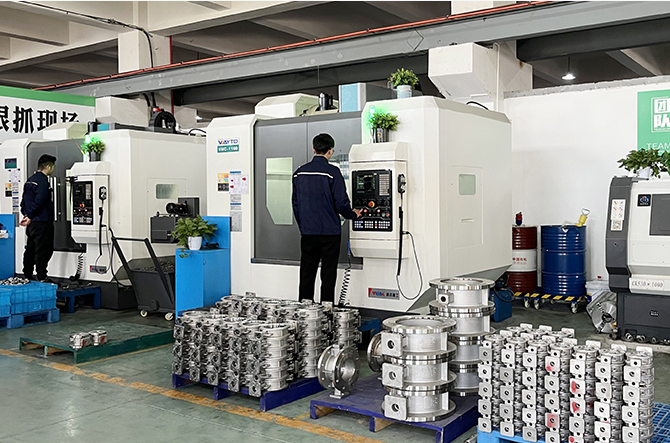Company Profile


The types and structures of adjustment mechanisms for pneumatic actuators are roughly the same, mainly due to differences in the execution mechanisms. Therefore, the introduction of pneumatic actuators is divided into two parts: the actuator and the regulating valve. Pneumatic actuators consist of two parts: the actuator and the regulating valve (regulating mechanism). According to the magnitude of the control signal, generate corresponding thrust to push the regulating valve to operate. The regulating valve is the regulating part of the pneumatic actuator. Under the action of the actuator thrust, the regulating valve produces a certain displacement or angle, directly regulating the flow rate of the fluid. 1. Pneumatic devices are mainly composed of cylinders, pistons, gear shafts, end caps, seals, screws, etc; The complete set of pneumatic equipment should also include components such as opening indication, stroke limit, solenoid valve, locator, pneumatic components, manual mechanism, signal feedback, etc. 2. The connection size between the pneumatic device and the valve should comply with the provisions of ISO5211 (bottom), GB/T12222, and GB/T12223. 3. Pneumatic devices with manual mechanisms should be able to open and close pneumatic ball valves using their manual mechanisms when the gas source is interrupted. When facing the handwheel, the handwheel or handle should rotate counterclockwise to open the valve and clockwise to close it. 4. When the end of the piston rod has internal or external threads, there should be a wrench socket suitable for standard wrenches. 5. The sealing ring of the piston should be easy to replace and maintain. 6. Pneumatic device with buffer mechanism
The valve limit switch box APL310N, as an important component in the field of industrial automation, is widely used in the signal feedback system for the opening and closing of 90 degree rotary valves such as pneumatic butterfly valves and ball valves. Its exquisite design and powerful functions provide reliable technical support for industrial process control and automation operations. This article will provide a detailed introduction to the structural characteristics, working principles, application areas, installation and maintenance of the APL310N valve limit switch box, in order to help readers better understand and apply this product.
Core working principle The energy conversion of pneumatic actuators is based on the pressure energy of compressed air, and mechanical motion is achieved through the structure of cylinders or pneumatic motors. It is mainly divided into the following two categories: Linear motion type (straight stroke). Single acting: Compressed air pushes the piston to move in one direction, and the spring provides a restoring force. Suitable for small valves, with a simple structure but low output force.